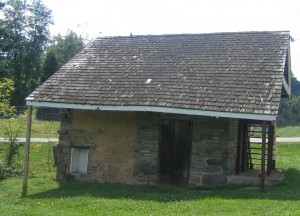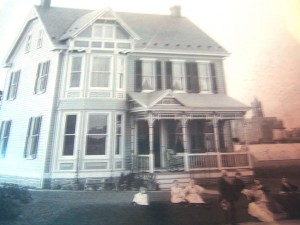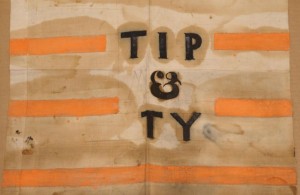Several years ago at work my phone rang and a cousin I’d never heard of was on the other line. His last name, Drais, was my great-grandmother’s maiden name and he lived in the same town my grandfather grew up in. I had visited this town many times, but never knew any family aside from my grandfather’s 11 siblings.
I had been keeping a blog back then and had mentioned our mutual third great-grandfather, a Civil War veteran, Felix Drais. Randy had been looking for info on Felix and found me.
I was pretty stunned, but the really fascinating stuff came much later. It’s one of those things that I can’t imagine happening without the internet–I’m not sure how he ever would have found me.
We exchanged notes on Felix and he sent me the genealogy on our family that he found. He also invited us to visit Gettysburg with him to see Felix’s house. This third great-grandfather was born in Ohio, but had been wounded at Gettysburg and was cared for by a field nurse from the area. When he was discharged he married her and took her home to Ohio. Once his father passed away, they bought a farm in Gettysburg on land that was once a battlefield. Randy was in touch with the last of our family to have lived in the house.
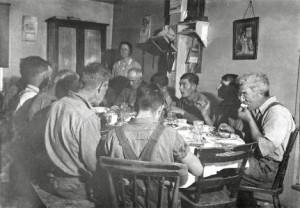
My aunt, mother and I drove to York, Pennsylvania for the first time in many years. We visited with family and then we met up with Randy. First, he took us to see some art. You see, the last of our family to live in that farmhouse was a photographer and his widow was still alive. His photography captured a time in Adams County that wasn’t often seen on film and there had been a recent showing of his work.
We spent some time looking at Jim Lott’s photographs, like the one on the right, of his life on the farm. They were really amazing to see.
Eventually we took off to see the farmhouse with our own eyes. On our way there, Randy told us that when Felix had gotten too old to farm, he built a “city house” inside the city limits of Gettysburg and we were about to go by it.
As luck would have it, it was for sale and Mrs. Lott knew the realtor. She called and asked if we could see inside. This was more than I could have ever imagined seeing–I felt like I had just walked into a history book.
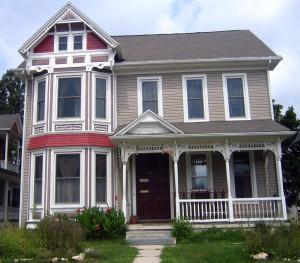
I couldn’t believe I was walking around inside the house that my 3rd great-grandfather had once lived in. There were traces of him still there–he had the cross from his Union Army regiment carved into the woodwork around the doors.
The realtor had a copy of the original deed, which included a photo of the family on the front lawn. Felix is standing, with his hat in his hand with a long white beard that is halfway down his chest. He was probably around 50 years old, but he looked much older.
If this has been all that I saw on the trip, it would’ve been enough, however we were off to the farmhouse. We were not able to go inside, but instead walked around the grounds, including the barn and the old ice house. We were seeing some of the same sights Jim Lott had photographed; I was so happy that much of it looked the same.
I know from archives of the Gettysburg newspaper, that Felix came to the farm in 1883 with “two young Clydesdale horses, Short-horn and Devon cattle, and Poland china hogs.” He was 35 at the time and had eight children ranging in age from 1 to 16 years old. Their last child was born in Gettysburg, two years after they arrived.
Being able to see and hear so much family history was amazing. While it was the internet that helped Randy find me, it was the fact that we’re both so interested in our family history that made this happen and that Randy had the nerve to call a stranger and ask if I was his cousin. He also writes about history online–he’s a Civil War buff and maintains a very thorough Civil War website. So much of genealogy is visiting graveyards, libraries and archives, but there’s still a human component–even if you’re researching distant ancestors. Stories get passed down, cousins may have stayed connected or the current owners of your ancestor’s old house may have a dusty old photo of your family that came with the deed. None of it is anything I expected, but it was really excellent to have it happen.
